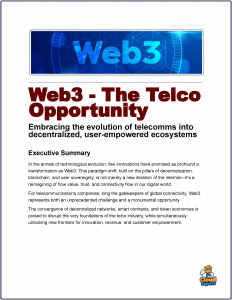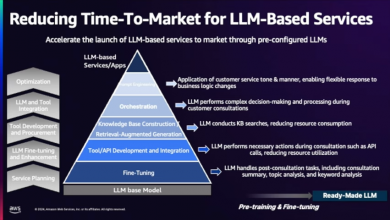Case Study: Conflux Network and China Telecom Collaborate to Develop BSIM
How Conflux Network is collaborating with China Telecom to develop a sim card integrated with Blockchain technology called BSIM.
 A BSIM, or Blockchain-enabled SIM, is an advanced evolution of the embedded SIM (eSIM) technology that integrates blockchain capabilities directly into the SIM card infrastructure used by telecommunications companies (telcos).
A BSIM, or Blockchain-enabled SIM, is an advanced evolution of the embedded SIM (eSIM) technology that integrates blockchain capabilities directly into the SIM card infrastructure used by telecommunications companies (telcos).
It combines the flexibility and programmability of eSIMs with the security, decentralization, and transparency features of blockchain technology to enhance mobile connectivity, identity management, and digital transactions.
The partnership between China Telecom and Conflux Network exemplifies BSIM in action. Their BSIM card, unveiled in 2023, integrates Conflux’s blockchain technology to offer high-speed, secure telecom services with features like cross-chain interoperability and cryptocurrency support, targeting China’s massive mobile subscriber base.
This offers benefits for Telcos and Users:
- For Telcos: Reduced fraud and operational costs (e.g., no physical SIM production), new revenue streams from blockchain-based services (e.g., identity verification, IoT connectivity) and competitive edge in the growing digital and IoT markets.
- For Users: Greater control over identity and data privacy, simplified global roaming and provider switching and access to decentralized services like crypto payments directly from their device.
What is an eSIM?
An eSIM (embedded Subscriber Identity Module) is a programmable, digital version of the traditional physical SIM card. Unlike a physical SIM, which needs to be inserted into a device, an eSIM is embedded in the device’s hardware and can be remotely provisioned with carrier profiles. This allows users to switch network providers or plans without swapping physical cards, offering greater convenience and flexibility, especially for IoT devices, smartphones, and wearables.
Adding Blockchain to eSIM: The BSIM Concept
A BSIM takes the eSIM framework and enhances it by embedding blockchain technology into its functionality. Blockchain is a decentralized, tamper-resistant ledger system that records data across a network of nodes, ensuring security and transparency without relying on a central authority. By integrating blockchain into an eSIM, a BSIM introduces several transformative features for telcos and end users:
Key Capabilities
- Private Key Generation: A BSIM can generate and store cryptographic private-public key pairs directly on the SIM card, which acts as a secure element. The private key never leaves the device, reducing the risk of hacking or unauthorized access.
- Tamper-Proof Authentication: Blockchain ensures that identity and transaction data are immutable once recorded, preventing fraud such as SIM swapping or cloning.
- Decentralized Trust: Instead of relying on a centralized database (vulnerable to breaches), the BSIM leverages blockchain’s distributed ledger for secure authentication and verification.
2. Seamless Global Connectivity
Cross-Network Interoperability: BSIMs can facilitate seamless switching between telecom providers worldwide without physical SIM changes, as eSIM profiles can be updated over-the-air (OTA) and validated on a blockchain network.
Roaming Simplified: Blockchain can enable decentralized agreements between telcos, reducing roaming costs and complexities by recording usage and payments transparently across borders.
3. Digital Identity Management
Self-Sovereign Identity: Users can manage their digital identities securely using the BSIM, with blockchain ensuring that identity data is encrypted and controlled by the individual rather than a third party.
Multi-Purpose Authentication: Beyond telecom services, the BSIM can authenticate users for other blockchain-based applications (e.g., payments, IoT device control) using the same secure identity.
4. Support for Cryptocurrency and Transactions
Crypto Wallet Integration: The BSIM can function as a hardware-based cryptocurrency wallet, storing private keys and enabling secure, on-device transactions (e.g., paying for data plans with Bitcoin or other cryptocurrencies).
Micropayments: Blockchain’s low transaction costs make it ideal for micropayments, such as paying for mobile data or IoT services in real-time.
5. IoT Enablement
Autonomous Device Management: For Internet of Things (IoT) devices, BSIMs can enable secure, zero-touch provisioning and peer-to-peer communication, with blockchain logging device interactions immutably.
Scalability: A BSIM can support millions of IoT devices by leveraging blockchain’s distributed architecture, ensuring efficient and secure connectivity.
How BSIM Works in Practice
Hardware: The BSIM is an eSIM chip embedded in a device (e.g., smartphone, IoT sensor) with added blockchain functionality, such as a secure element for key storage and processing.
Software: It runs lightweight blockchain protocols or connects to external blockchain networks (e.g., Ethereum, Conflux) to validate transactions and identities.
Telco Integration: Telecom providers provision the BSIM with network profiles OTA, while blockchain smart contracts manage authentication, billing, and data sharing between parties.
User Experience: Users activate the BSIM via a QR code or app, and it handles connectivity, payments, and identity management seamlessly in the background.
For example, China Telecom, in collaboration with Conflux Network, has developed a BSIM that uses advanced blockchain features like Tree-graph, dual Proof-of-Stake (PoS), and Proof-of-Work (PoW) to achieve high performance, enabling secure cross-chain asset transfers and messaging.
Challenges and Considerations
Adoption: Widespread use requires standardization and cooperation among telcos, device manufacturers, and blockchain platforms.
Security Trade-Offs: While blockchain enhances security, a lost device could mean losing access to funds or identity unless recovery mechanisms are robust.
Scalability: Running blockchain processes on a SIM card requires optimization to avoid performance bottlenecks.
Real-World Example
In summary, a BSIM is a next-generation eSIM that leverages blockchain to revolutionize telecom services. It merges secure connectivity with decentralized digital capabilities, paving the way for a future where mobile devices serve as hubs for communication, identity, and financial transactions—all underpinned by the trust and transparency of blockchain technology.
China Telecom, one of the largest telecommunications companies in the world, has been actively exploring blockchain technology to improve its services.
Conflux is a permissionless Layer 1 blockchain connecting decentralized economies across borders and protocols.
Recently migrated to hybrid PoW/PoS consensus, Conflux provides a fast, secure, and scalable blockchain environment with zero congestion, low fees, and improved network security. As the only regulatory-compliant public blockchain in China, Conflux provides a unique advantage for projects building and expanding into Asia.
Conflux has collaborated with global brands and government entities in the region on blockchain and metaverse initiatives, including the city of Shanghai, McDonald’s China, and Oreo.
Collaboration between Conflux Network and China Telecom
The collaboration between Conflux Network and China Telecom involves a joint research and development effort to integrate blockchain technology into sim cards. Both organizations bring their expertise and resources to the table, aiming to create a secure and efficient solution for the telecommunications industry.
The result of this collaboration is BSIM, a sim card that leverages blockchain technology to enhance security and privacy. BSIM incorporates a decentralized identity management system, ensuring that user data is securely stored and authenticated. By using blockchain, BSIM eliminates the need for centralized servers, reducing the risk of data breaches and unauthorized access.
BSIM also enables secure and transparent transactions between users and service providers. With blockchain’s immutable and auditable nature, users can have full visibility into their transactions, ensuring fair and accurate billing. Additionally, BSIM’s integration with smart contracts allows for automated and trustless interactions between users and service providers.
Benefits of BSIM
The integration of blockchain technology into sim cards offers several benefits for both users and service providers:
- Enhanced Security: BSIM’s decentralized identity management system reduces the risk of identity theft and fraud.
- Improved Privacy: User data is securely stored and authenticated, ensuring privacy and data protection.
- Efficient Transactions: Blockchain enables fast and transparent transactions, eliminating the need for intermediaries.
- Automated Billing: Smart contracts facilitate automated and accurate billing, reducing manual intervention.
- Reduced Costs: By eliminating the need for centralized servers, BSIM reduces infrastructure costs for service providers.
The development of BSIM is just the beginning of the integration of blockchain technology into the telecommunications industry. As blockchain continues to evolve, we can expect further innovations and applications that enhance security, privacy, and efficiency in the sector. The collaboration between Conflux Network and China Telecom sets a precedent for future partnerships and advancements in the field.
The BSIM card will manage and store the user’s public and private keys in the card and carry out digital signatures in a way that the private key does not exit the card. The BSIM card can also allow encrypted storage and key retrieval.
Conclusion
The collaboration between Conflux Network and China Telecom to develop BSIM showcases the potential of blockchain technology in the telecommunications industry. By integrating blockchain into sim cards, BSIM offers enhanced security, privacy, and efficiency for users and service providers. As blockchain technology continues to mature, we can expect further advancements that revolutionize the telecommunications sector.



